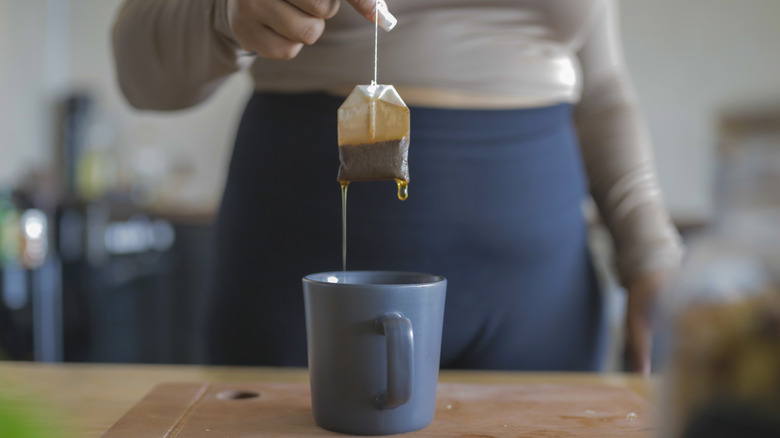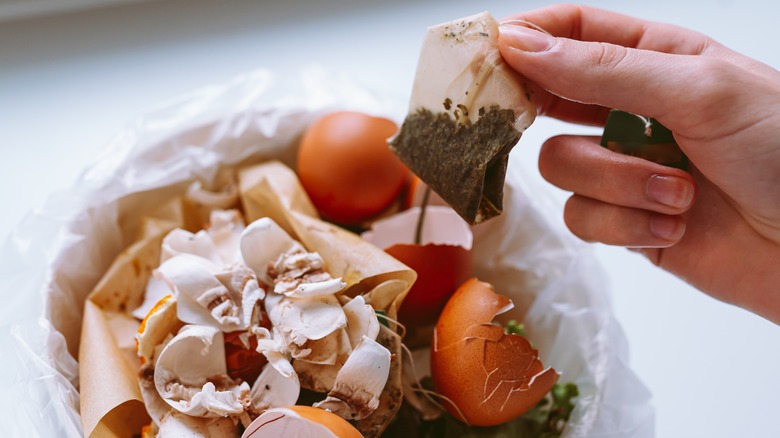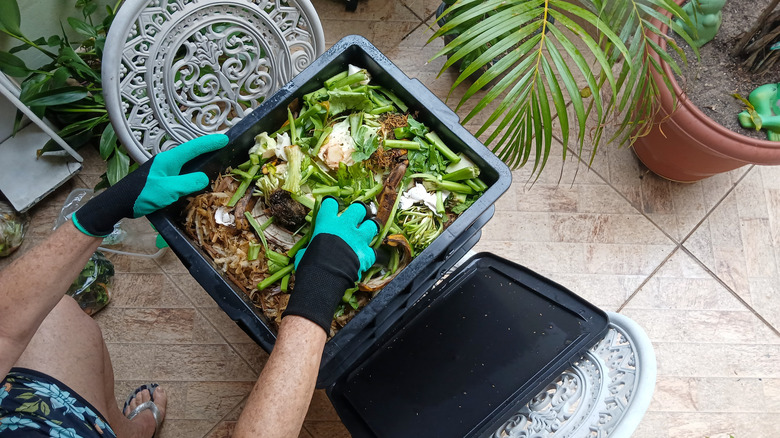Think Twice Before Using Tea Bags In Your Compost
There is nothing more relaxing than a warm cup of tea. It is one of the most popular drinks in the world, second only to water, and for good reasons: it is rich in polyphenol, which can act as antioxidant and anti-inflammatory agents. If you are an eco-minded gardener who composts, you may be wondering if the leftover teabags are healthy for your compost pile, too. However, do not start dumping teabags in your compost bin just yet. As it turns out, they are an ingredient that you should think twice before adding to your compost pile.
The problem is not the tea itself — it is the materials used to make the bags. Teabags often contain plastic, which can take anywhere from tens to hundreds of years to break down, depending on the type. One of these plastics is polypropylene, which is used to keep the bags from disintegrating... and takes up to 30 years to degrade naturally. Preventing teabags from falling apart is great when you are steeping them, but not when decomposing is what you need.
To make matters worse, steeping a single plastic-containing teabag can release billions of microplastics and nanoplastics into your cup. Microplastics are unhealthy for the soil and the plants growing in it. Moreover, the metal staples commonly found on teabags are not compostable, so even if the teabag itself is biodegradable, its other parts may not be.
What about tea bags labeled compostable?
To combat potential environmental issues, many companies create teabags that are intended to be compostable. However, in some cases, this label can be misleading. According to the EPA, for plastic to be sold as compostable, "it must be broken down by biological treatment at a commercial or industrial composting facility." This testing uses high heat that your average DIY composting system will not be able to reach, so teabags breaking down in an industrial setting does not mean they will decompose effectively at home.
Some tea companies use plant-based plastics, also known as polylactic acids or PLAs, to market themselves as eco-friendly. While it is true that PLAs are derived from natural and renewable resources, a 2024 study published in the Science of the Total Environment found that bags made exclusively of PLA did not decompose at all after seven months, concluding that "bio-based PLA does not offer a more 'environmentally friendly' alternative." The microplastics from PLA also negatively affected earthworms while simultaneously allowing them to spread microplastics through the soil. For a teabag to be truly biodegradable, it must be made of a mix of PLA and cellulose or made with no plastic at all.
Tips for composting tea bags
While plastic-free teabags may not be the norm, they do exist and are marketed under several brand options. If your teabag is compostable, there are still a few precautions to take. First, squeeze some water out of the teabag before composting since too much moisture can disrupt the process. If you are adding teabags to the bin regularly, you may need to balance your compost out – tea is high in nitrogen, but compost needs a 30:1 ratio of carbon to nitrogen, so consider adding carbon-rich compost ingredients you already have at home like corrugated cardboard or newspaper clippings.
When in doubt, you can always snip the teabags open and put the tea leaves directly in the compost bin. The leaves can increase the levels of nitrogen, phosphorus, and potassium in your soil, all of which are primary nutrients for plant growth. You can also use tea leaves as mulch by letting them dry out, scattering a thin layer around plants, then giving the mulched area a bit of water. Tea leaves are mildly acidic, so make sure you are only applying them to plants that like acidity or are less sensitive to the pH of their soil.


